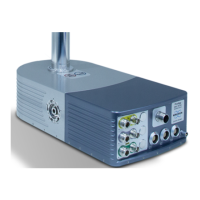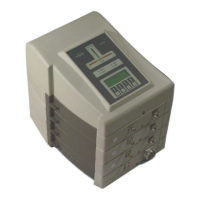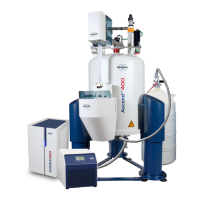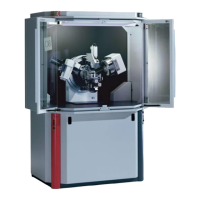56 (107) BRUKER CryoProbe User Manual
Recommended NMR parameters
INGS’ sheet of the CryoProbe for the minimum gas flow rate (which is often higher
than the maximum flow rate that conventional probes can handle).
CAUTION: The VT gas must not be interrupted or switched off at any time while
the CryoProbe is in cold operation. Samples with high melting points like water or
benzene may freeze within a few seconds.
Both N
2
gas and dry air can be used as VT gases. For a CryoProbe, there is no
difference between them with respect to shimming or RF performance.
For measurements at low sample temperatures, a BCU05 gas cooler is required.
If the target sample temperature is close to the temperature of the VT gas, the VT
Interface Box must be set to L
OW. In any case, the allowed sample temperature
range, the minimum VT gas flow rate, and the maximum VT heater power must be
obeyed as given on the CryoProbe-specific ‘L
IMITATIONS - WARNINGS’ sheet. De-
tails are listed below.
Symbols used
: target temperature for the sample
: temperature of the VT gas before it enters either the CryoProbe direct-
ly or a BCU05 gas cooler
: minimum achievable sample temperature in a cold CryoProbe when
the VT heater is off
: lower limit of the temperature in the sample cavity, see the specific
‘L
IMITATIONS - WARNINGS’ sheet of the CryoProbe
: upper limit of the temperature in the sample cavity, see the specific
‘L
IMITATIONS - WARNINGS’ sheet of the CryoProbe
.
Measurements above T
VT gas
+ 3°C 5.3.1
An optional VT gas cooler BCU05 is not required. Connect the gas flow either di-
rectly to VT unit or switch off the BCU05.
Depending on the target temperature (see “Figure 5.1”) the selector switch on
the VT Interface Box has to be set accordingly to
• L
OW For T
VT gas
+ 3°C < T
target
< T
VT gas
+ 5°C
T
target
T
VT gas
T
min
T
limit, low
T
limit, high
Figure 5.1. The different ranges of the target temperature
T
limit, high
T
target
T
limit, low
T
min
T
min
+ 5°C
T
VT gas
+ 3°C
T
VT gas
+ 5°C
L
OW LOWHIGH HIGH
no BCU05 requiredBCU05 required

